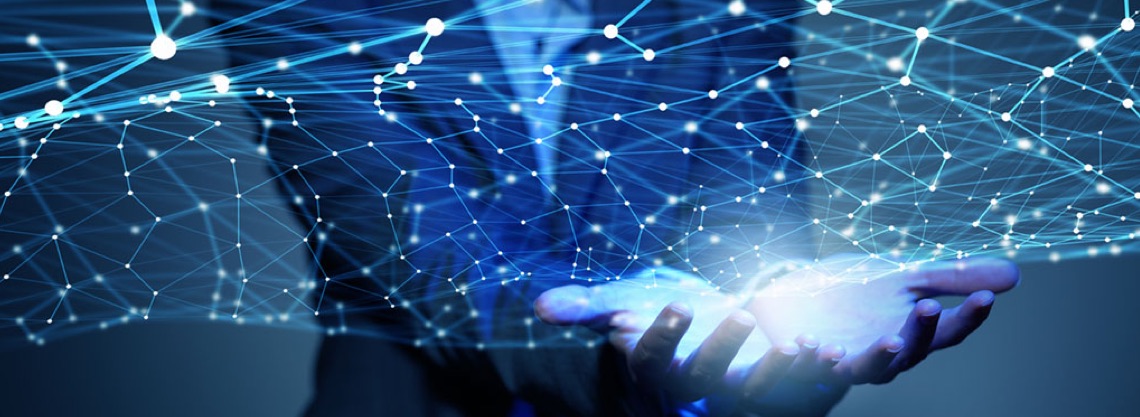Thinking about the biggest trends in computing, chances are you will come up with the cloud, Artificial intelligence, and the Internet of things. Nearly everyone knows about the cloud but this technology is not stagnant, it is evolving which has resulted in the rise of a new computing model — Edge computing (EC.) Thus, new scenarios are being composed inspired by these four technologies as foundational to the optimization of data handling processes.
From Cloud to Edge — back to the roots
The bigger the loads of data that need to be operated on, the better. In the context of the evolution of the Internet technologies that the IoT is triggering, this upward trend required and is still requiring changes in the computing paradigm. This is how Cloud computing (CC) happened to dominate the global IoT market recently.
Since isolated embedded systems provide applications with the relatively small data volumes, they have given way to cloud-based services, systems, and solutions. At some point, Cloud computing decisively changed the form of IT discourse. As equally revolutionizing technologies, IoT and the cloud turned out to complement each other perfectly — there are platforms that are provided with content to be generated on. Thus, using the metaphor of a cloud, we, as single users and employees or managers of large and small companies, have storage and processing tasks offloaded. Luckily, there is a whole variety of platforms that allow the merge of CC and IoT. To put it in a nutshell, the benefits of Intelligence in Cloud for IoT can be presented as follows:
- remote management of data
- the merging of data from multiple devices
- infinite storage that let AI tools improve their algorithms

We seem to hold all the cards in our hands, yet this is just for now and, in fact, one should look ahead. This type of computing works well with PCs, smartphones, and tablets, while the number of IoT devices is, in turn, expected to triple by 2025 growing to alarming 75.44 billion. More devices mean there will be more data to process. Although the cloud serves as a relatively reliable intermediate layer between smart objects and applications, its scope must be broadened with the load growth. The shift in the computing paradigm has been needed badly.
Why Edge Computing?
Though we’ve emphasized the relation of computing to IoT specifically, Edge is not all about it. The primary motivation behind the use of Edge touched a broad question of efficient data collection and management. In the course of time, the new form of computing proved to be the best place for the realization of these purposes and started getting anchored in the corporate strategies. But how and why?
IoT belongs to multiple verticals and is characterized by interactivity as user-centric service. It implies the need for a certain proximity of the processing to the source. With CC, however, there is only one remote big data center (in rare cases, there may be several of them) that serves as cloud storage, which is highly inconvenient when the interaction of users with their devices must be prompt. Consequently, Edge computing became an alternative method of eliminating time and distance and a perfect solution for accelerating and improving the performance of the cloud for users introducing the following huge improvements:
- Latency reduction. Experiencing boosts in data volumes might be much more comfortable while living at the edge. Instead of network latency caused by non-stop transferring data back and forth between devices and clouds, the edge allows this interaction to be dynamic offering the ways of hyper-interactivity implementation. The edge does not merely replace clouds, it minimizes the latency. For example, if user bases are dispersed, clouds can be replicated remotely by installing intermediary data centers or servers. Physical proximity affects not only users’ trust but also the latency. As a result, end users who, figuratively speaking, live in Tier-2 cities far from big data centers have an opportunity to experience a better UX.
- Advanced security management. Another reason to consider EC is the pressing security issues. Data privacy in IoT must be a focus of attention. Now that systems are connected to the cloud and to the Internet, there is a danger not only to data but to what is happening in the real world too. The aforementioned time and distance elimination can reduce the risk. The basic logical network elements — edge nodes — are being designed and arranged in hierarchical order to optimize the whole architecture. Lying between the cloud and the IoT devices they serve, the nodes contribute to enhancing the security. The closer they are located to the sensors, the shorter the data flow distances are — the smaller the attack surface is.
Edge Computing: How is it different from the Fog?
Sometimes, these two notions are used interchangeably, but they actually convey different meanings. Similar to edge computing, the fog is a mediator between end users and cloud data centers. However, Cisco, who has introduced fog computing, claims that the fog is the standard according to which the edge is brought into action, not the edge itself.
Azure IoT Edge
Indeed, the concept of Edge computing is exciting but it means nothing without the real-life examples of its application. Yet in 2008, Microsoft raised the question of the future of Cloud computing and then, a decade later, in 2017, came up with the Azure IoT Edge Runtime.
The company recognized the waves of innovation and admitted the fact that Edge and IoT were fitting in these waves connecting two worlds with advanced AI systems. It was a new feature of Azuze, a cloud computing platform, that allowed doing EC. This higher-level intelligence was open sourced as a new scenario necessary owing to:
- reduced latency resulting in near real-time response
- protocol translation as the way to connect devices by default having no access to the Internet
- data normalization as the way to make it available for other systems and solutions
- privacy and protection of users’ data
Numerous internationally recognized companies that support IoT are approaching Azure for their clients to have a better customer experience when on the Internet or even offline. The following concepts Azure IoT Edge communicates are demonstrating why the solution is worthwhile and what kind of value it is attaching the UX in general and to businesses in particular:
- Edge Runtime. It provides such fundamental services as connectivity and security management for intelligent devices otherwise isolated from the Web, offline storing and forwarding.
- Modules. It is Edge Runtime where modules are handled. They can be presented as links of a chain that perform separate actions adding capabilities to the runtime to solve an end to end scenario. Besides, custom modules can be created by writing them in the language of the software engineers’ choice. For instance, modules can be applied to connect an IoT device which is not adapted to access the Internet and the cloud, thus, sending data to Azure.
- Cloud offload. We have already mentioned tasks offloading. What should be noted here is that at Azure IoT Edge, analytics is performed with ML involved.
- Cloud configurability and monitoring. The IoT hub is used to control device lifecycle, as well as to configure and monitor IoT devices.
Therefore, Azure IoT Edge as one of Microsoft’s services is already proving to be a successful platform for innovation acceleration and progressive IoT solutions building.
Crosser Edge Computing Solution
Since EC is growing in popularity and evolving, companies that are focusing on the development of the software solutions for the edge exclusively are coming on the scene.

One of these companies is Crosser. They have engaged in the EC solutions development activities for the following reasons:
- Aspects of IT security. Cleaning at the edge (filtering out the relevant data, normalizing it from different sources, and aggregating to reduce its amount and get a clean data set) allows anonymizing data before sending it to the cloud and transferring only the relevant and critical information there.
- Streaming analytics. Moving the analytics to the edge instead of sending it to the cloud or to an on-premise environment along with applying more advanced algorithms detecting data anomalies helps to generate notifications about the maintenance procedures and security measures that are needed locally.
- Available under any circumstances. Poor connectivity to the cloud is not an obstacle anymore. EC introduces buffering of data to store it temporarily and then upload it to the cloud when the connection is restored.
- Lower data storage costs. Cloud providers usually charge the clients for the number of connected devices and connections, amount of data sent, selected services in the cloud, and the frequency of computing usage. Therefore, the system and the architecture must be adjusted to optimize these costs, which can be easily done with the help of edge computing.
At that, Crosser is successfully meeting the objective of taking advantage of the above features applying the full edge computing solution for the benefit of its clients.
Conclusion
One way or another, the establishment of novel computing paradigms is a natural process in view of the ongoing IT innovations.
Computing is found in many things forming our private and corporate everyday lives — that is what the power of IoT means. The whole universe of the interconnected computing devices in every shape, form, and size is coming together at the edge. To those who understand how revolutionizing the IoT is and have data to be managed properly and with minimum risk, such platforms as Azure IoT Edge and Crosser IoT Edge may be very useful. All it takes is to allow these computing platforms, empowered by the merits of the AI, to create intelligent edge solutions getting processes under complete control.

© 2018, Vilmate LLC




